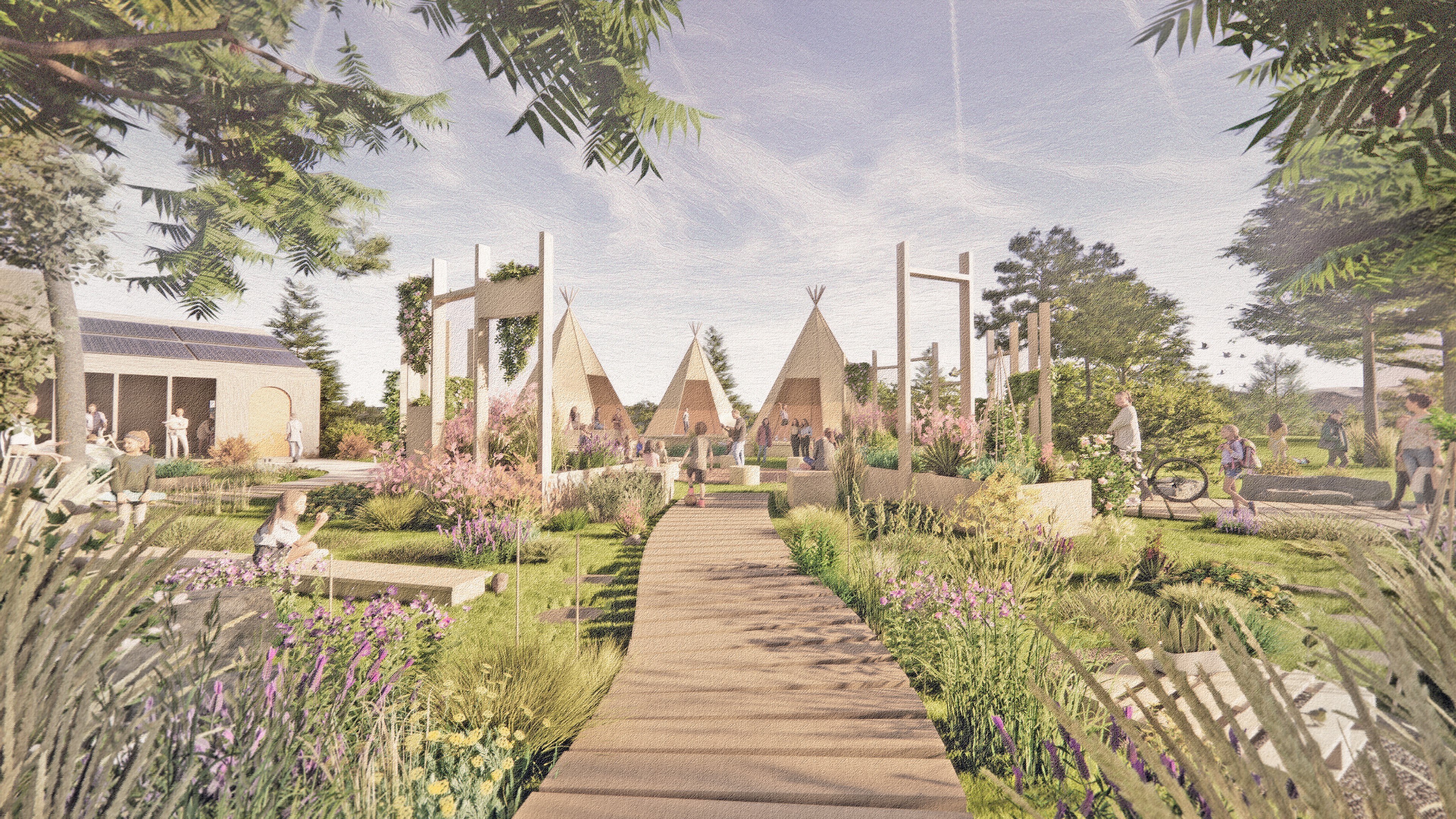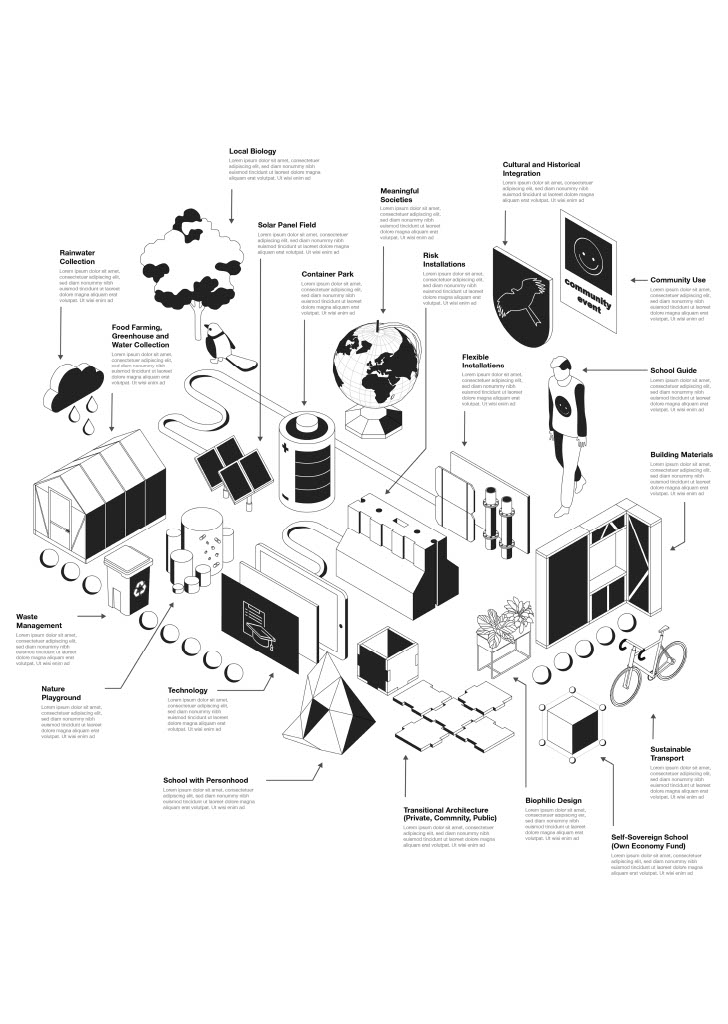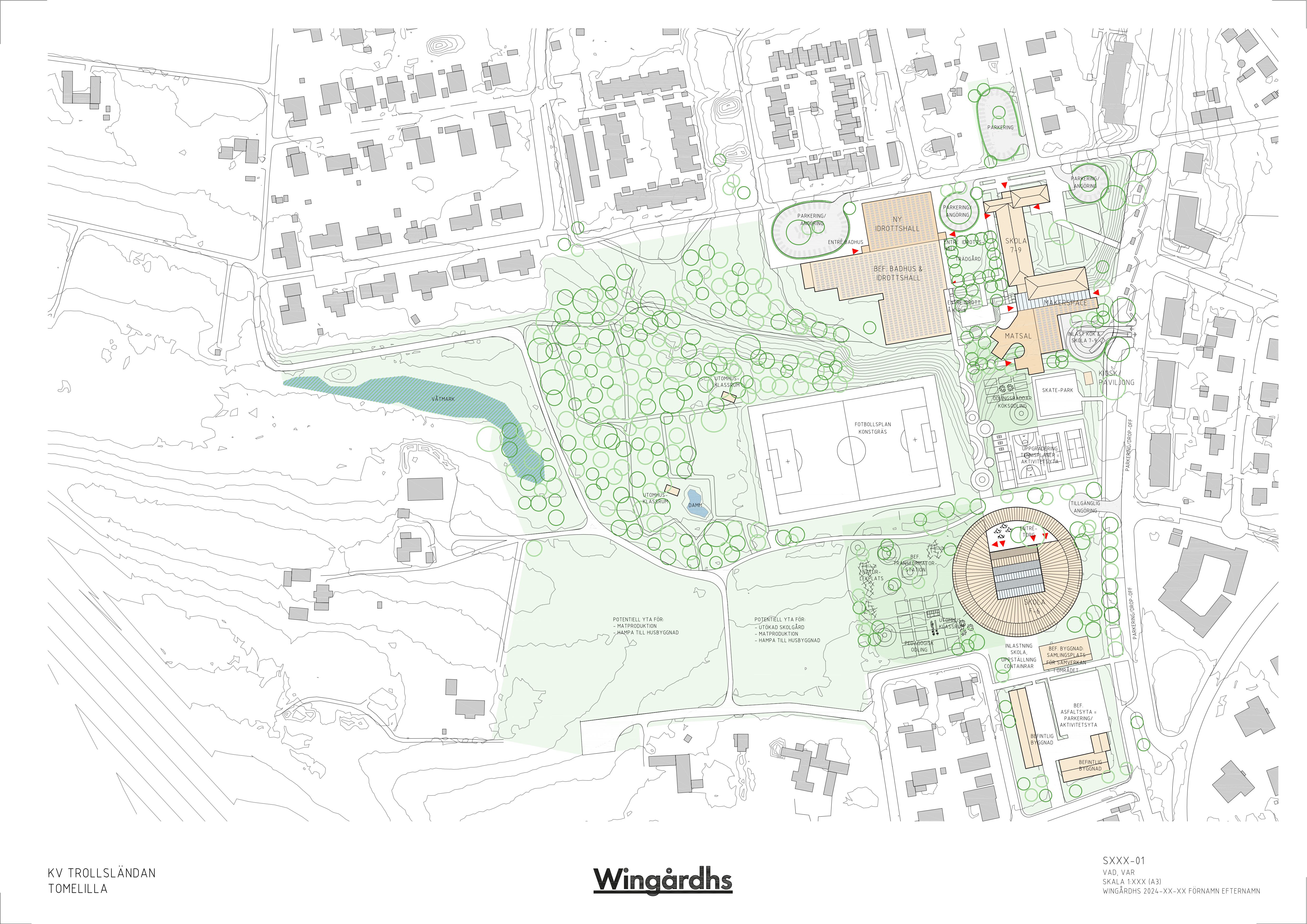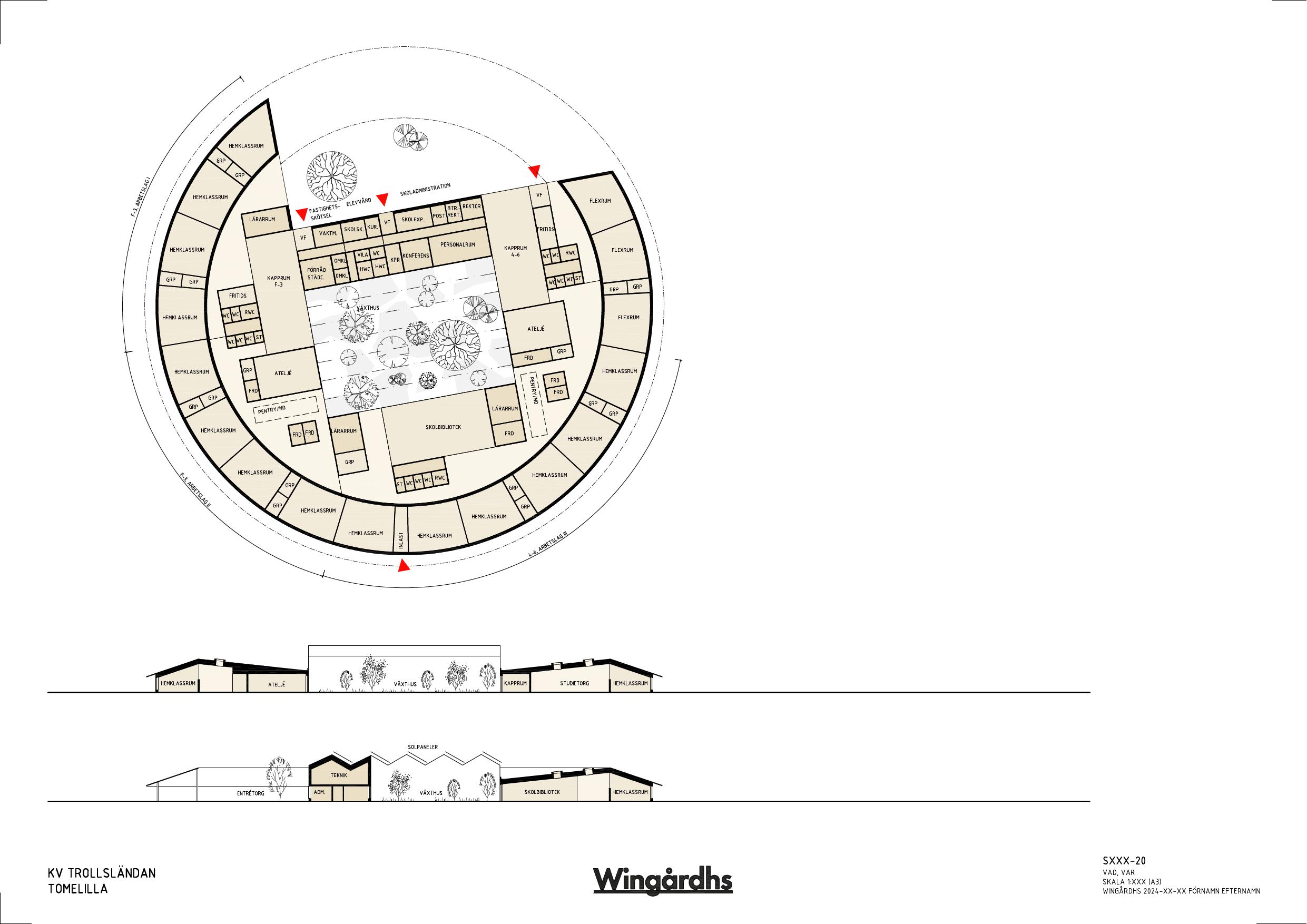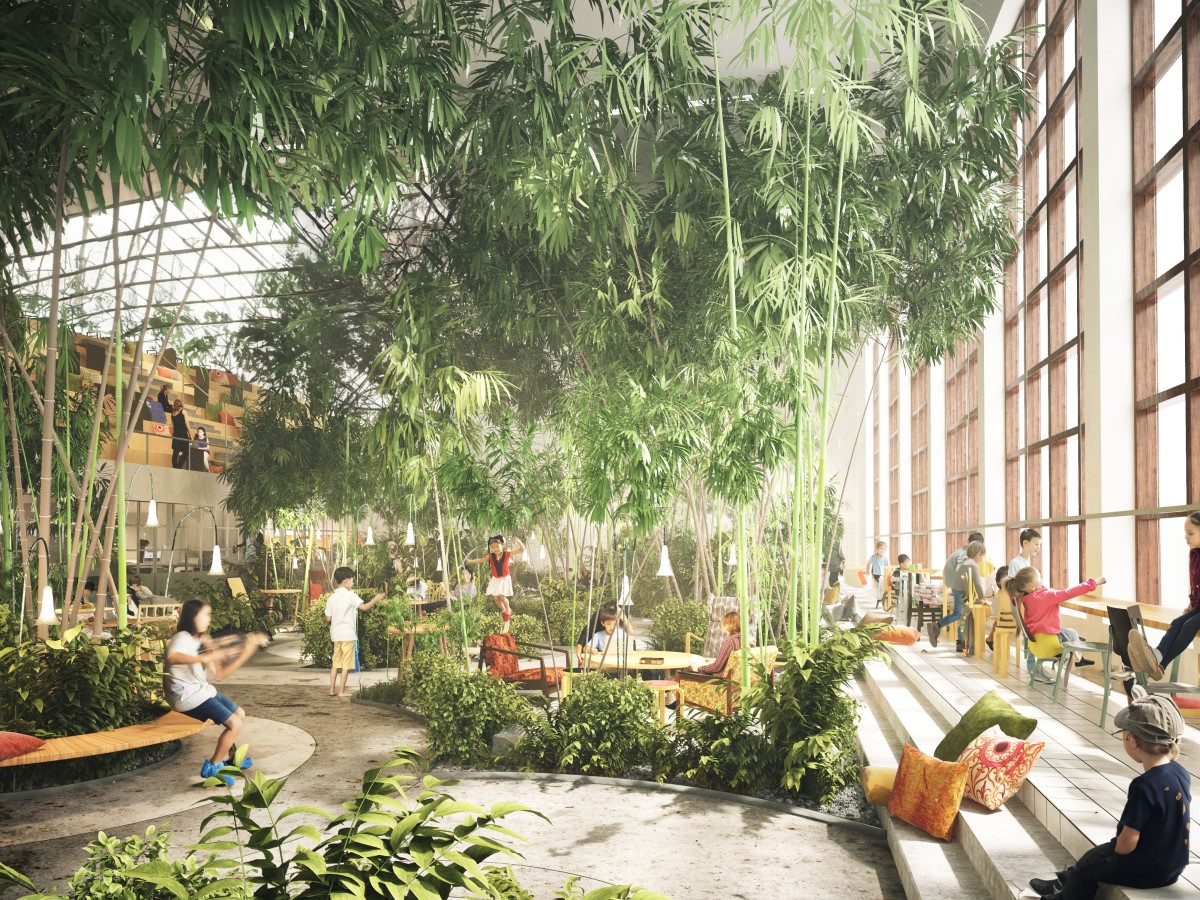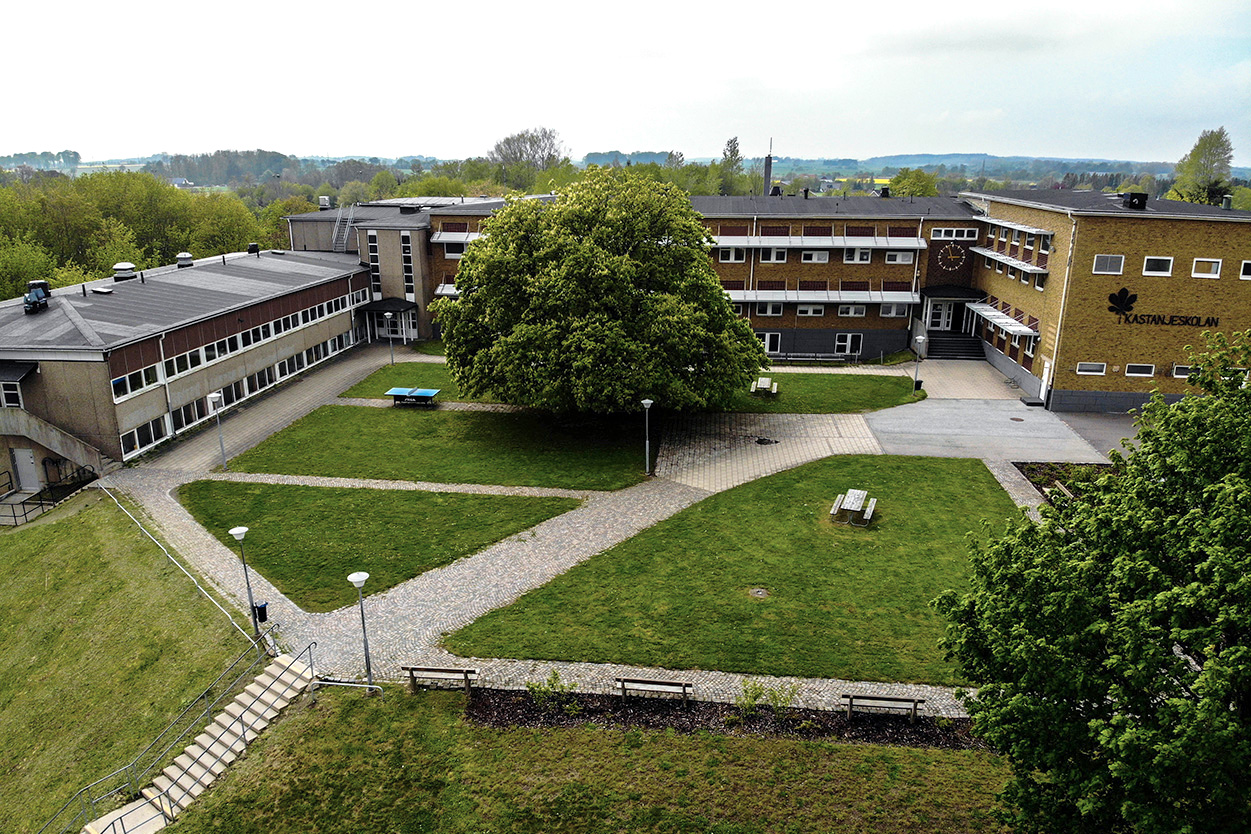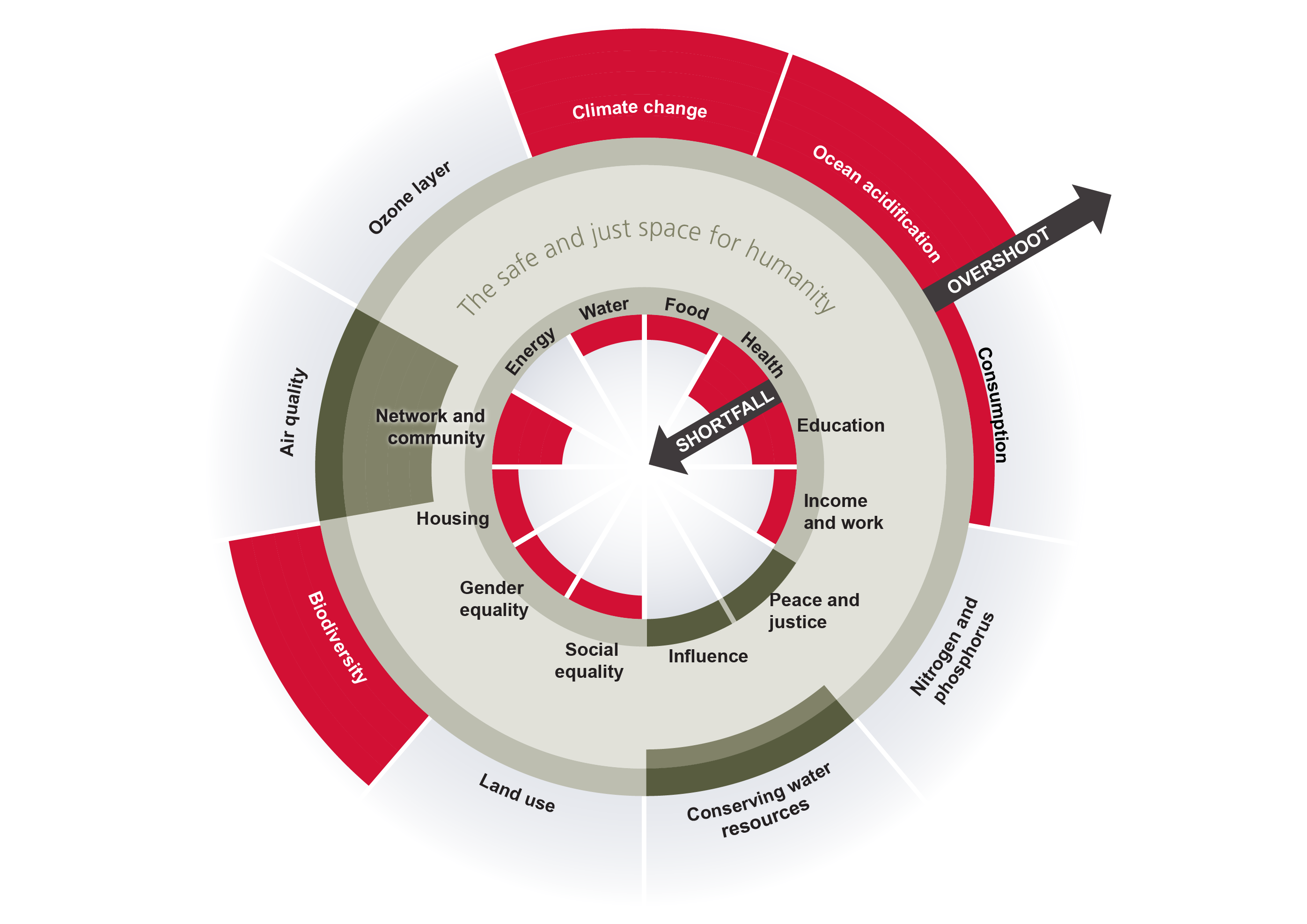A thriving school in Tomelilla
A thriving school in Tomelilla - A local school area with Doughnut Economics as a compass
In Tomelilla, a new school area is about to be developed with the principles of Doughnut Economics as a compass. Our challenge:
How can the new school and its surrounding area contribute to Tomelilla becoming a thriving place for thriving people, while simultaneously respecting the planet and the well-being of others?
Our children have contributed to the masterplan. Now we are taking the next steps towards trying to create a school area that is beautiful for our eyes, minds and souls.
How can the new school and its surrounding area contribute to Tomelilla becoming a thriving place for thriving people, while simultaneously respecting the planet and the well-being of others?
Our children have contributed to the masterplan. Now we are taking the next steps towards trying to create a school area that is beautiful for our eyes, minds and souls.
Sweden
Tomelilla
Early initiative
Yes
Yes
Yes
No
No
1270: Tomelilla (SE)
Tomelilla municipality is planning the development of a new school and its surrounding area based on the principles of Doughnut Economics. As far as we know, this is the first time it is being done. A masterplan focusing on regenerative design have laid the ground in the spring 2024. In June the same year, the political board made the final decision and allocated fund in the budget for developing a school area consisting of a renovation of the municipality’s junior high school and a new elementary school. The project seeks answers to these questions that also was the basis for the masterplan:
- How can the new school and its surrounding area contribute to Tomelilla becoming a thriving place for thriving people, while simultaneously respecting the well-being of the whole planet, and of people elsewhere?
- What does it mean to design a school fit for a 21st century curriculum--one which is designed, constructed, and operated within planetary boundaries, and which delivers positive social benefits for all?
- How can we “imagine and build together a sustainable and inclusive future that is beautiful for our eyes, minds, and souls” (NEB)?
- What does it mean to create an educational and recreational environment in a beautiful area – a school that sets a precedent in Sweden and internationally around the question of what it means to work towards a safe and just world for future generations?
The new school area is planned to be completed in 2030. In parallel with developing project documents for procurement of construction, we now work with foresight together with design researchers. We are also working with researchers specialized in green school yards to ensure a regenerative, distributive and holistic school environment fit for the future.
Children's perspective and participation is an important part of the project. A child impact analysis laid the ground, and children’s participation has been a central theme from the early stages in the project.
- How can the new school and its surrounding area contribute to Tomelilla becoming a thriving place for thriving people, while simultaneously respecting the well-being of the whole planet, and of people elsewhere?
- What does it mean to design a school fit for a 21st century curriculum--one which is designed, constructed, and operated within planetary boundaries, and which delivers positive social benefits for all?
- How can we “imagine and build together a sustainable and inclusive future that is beautiful for our eyes, minds, and souls” (NEB)?
- What does it mean to create an educational and recreational environment in a beautiful area – a school that sets a precedent in Sweden and internationally around the question of what it means to work towards a safe and just world for future generations?
The new school area is planned to be completed in 2030. In parallel with developing project documents for procurement of construction, we now work with foresight together with design researchers. We are also working with researchers specialized in green school yards to ensure a regenerative, distributive and holistic school environment fit for the future.
Children's perspective and participation is an important part of the project. A child impact analysis laid the ground, and children’s participation has been a central theme from the early stages in the project.
School
Thriving
Holistic
Regenerative
Beautiful
Tomelilla municipality has not built a new school since the 1970s. With changing demographics, pedagogy and expectations from teachers, pupils and citizens, the need for a new school has become clear. If we are to fulfill our educational ambitions and the goals in our quality of life program, we must develop better educational environments. At the same time, the municipality has an ambitious climate program which, in short, means that we must stay within our climate budget and, in line with the Paris Agreement and achieve net zero emissions by 2045.
This potential conflict of goals is met by using the principles of Doughnut Economics where social and ecological sustainability are weighed into a holistic compass for a thriving society within the planetary boundaries. The masterplan is created around the four pillars; environmental regenerative, architectural design, technical innovation and community care.
Regenerative design elements aim to respect planetary boundaries, by not only minimizing negative human impacts on the environment, but also to actively restore and regenerate natural habitats. Aspects in the planning include; circular design and working with sustainable low-footprint materials; net-positive developments; retrofit design; energy efficiency; nature-based solutions; food growing; water conservation and raingardens etc.
Together with the Research Institute of Sweden (RISE) and two other municipalities, we explore how to integrate ideas and tools for Doughnut Economics thinking in energy planning including on site production and storage of energy. RISE is generalizing the lessons learned in scientific publications and practical tools.
We collaborate with a Hempfab project, which consists, among others, of Wingårdh's architects and Lund University. Together, we are not only investigating the possibility of using climate-friendly local hempcrete as a building material. We are also investigating whether it is possible to grow the hemp on site.
This potential conflict of goals is met by using the principles of Doughnut Economics where social and ecological sustainability are weighed into a holistic compass for a thriving society within the planetary boundaries. The masterplan is created around the four pillars; environmental regenerative, architectural design, technical innovation and community care.
Regenerative design elements aim to respect planetary boundaries, by not only minimizing negative human impacts on the environment, but also to actively restore and regenerate natural habitats. Aspects in the planning include; circular design and working with sustainable low-footprint materials; net-positive developments; retrofit design; energy efficiency; nature-based solutions; food growing; water conservation and raingardens etc.
Together with the Research Institute of Sweden (RISE) and two other municipalities, we explore how to integrate ideas and tools for Doughnut Economics thinking in energy planning including on site production and storage of energy. RISE is generalizing the lessons learned in scientific publications and practical tools.
We collaborate with a Hempfab project, which consists, among others, of Wingårdh's architects and Lund University. Together, we are not only investigating the possibility of using climate-friendly local hempcrete as a building material. We are also investigating whether it is possible to grow the hemp on site.
Just as regenerative design is important for respecting the planetary boundaries, distributive design is important for sharing and distributing value and power through community-empowering initiatives. This may include; participatory decision-making structures; public-common partnerships; community managed assets, etc. It also involves considering the well-being of all people involved in or impacted by the project - from users to neighbours and to those in the supply chains. By using doughnut economics principles (https://doughnuteconomics.org/principles-and-guidelines) as a guiding compass, regenerative design becomes a natural, integrated perspective in the planning of the school.
Already in the procurement of the masterplan, we demanded that the consultants should help us to answer the questions mentioned in the summary including:
- How can the new school and its surrounding area contribute to Tomelilla becoming a thriving place for thriving people, while simultaneously respecting the well-being of the whole planet, and of people elsewhere?
- What does it mean to create an educational and recreational environment in a beautiful area–a school that sets a precedent in Sweden and internationally around the question of what it means to work towards a safe and just world for future generations?
In parallel with the planning of the school area, the municipality also is a candidate for becoming certified as a Child Friendly City through Unicef's certification process (https://www.childfriendlycities.org/initiatives/sweden). This is to ensure that we include the children's perspective and rights as well as direct participation in the decisions. The process does not only include schools, but the whole municipal administration covering city planning, elder care, crisis preparedness etc.
Already in the procurement of the masterplan, we demanded that the consultants should help us to answer the questions mentioned in the summary including:
- How can the new school and its surrounding area contribute to Tomelilla becoming a thriving place for thriving people, while simultaneously respecting the well-being of the whole planet, and of people elsewhere?
- What does it mean to create an educational and recreational environment in a beautiful area–a school that sets a precedent in Sweden and internationally around the question of what it means to work towards a safe and just world for future generations?
In parallel with the planning of the school area, the municipality also is a candidate for becoming certified as a Child Friendly City through Unicef's certification process (https://www.childfriendlycities.org/initiatives/sweden). This is to ensure that we include the children's perspective and rights as well as direct participation in the decisions. The process does not only include schools, but the whole municipal administration covering city planning, elder care, crisis preparedness etc.
Children's participation is an important part of the initiative. Already during the work on the masterplan, surveys and workshops were carried out with our children. All the children in middle school were invited to answer a survey about the new school, including questions if they thought a new school was needed, what they thought was good and bad with a new school, how they wanted to contribute to the new school, and how they thought the new school could affect children elsewhere in the world. The survey also invited the children to draw the school. A school class in Iran also participated in the survey, to reinforce the global perspective.
Two open workshops were held at the local library. When we had a first draft for the masterplan, it was submitted to our youth council for comments. When we procured consultants for a natural value inventory, it was a demand in the procurement that they should do the inventory together with two of our school classes (see attached article from the local newspaper). Some quotes from the article:
“When the municipality would review what should be preserved in nature when a new school is built, expertise was called in. And who has a better idea of what the children of the future want, than the children who goes to school today?
- The blackberries must remain, the kitchen staff can make jam out of them, said Julius and Loui, some of those called in as reinforcements at Tuesday's nature value inventory.
…
(One of the consultants) Marika Stenberg admitted that it was a different day at work. With significantly more questions than usual.
- We will gather the children later and see what they have found. What I have understood, it's a lot.”
Two open workshops were held at the local library. When we had a first draft for the masterplan, it was submitted to our youth council for comments. When we procured consultants for a natural value inventory, it was a demand in the procurement that they should do the inventory together with two of our school classes (see attached article from the local newspaper). Some quotes from the article:
“When the municipality would review what should be preserved in nature when a new school is built, expertise was called in. And who has a better idea of what the children of the future want, than the children who goes to school today?
- The blackberries must remain, the kitchen staff can make jam out of them, said Julius and Loui, some of those called in as reinforcements at Tuesday's nature value inventory.
…
(One of the consultants) Marika Stenberg admitted that it was a different day at work. With significantly more questions than usual.
- We will gather the children later and see what they have found. What I have understood, it's a lot.”
The most important aspect of the initiative is to provide educational environment for our children that sets a precedent. But the aim is also to strengthen the area as a place for sports, culture and recreation and a place for community building.
In the work on the masterplan, open workshops were held, and several sports clubs and cultural associations were interviewed to identify their needs for improved infrastructure, facilities and accessibility.
The school's canteen and special rooms such as the craft room and domestic science rooms will be designed so that they can be easily accessible to community life and the public outside the school's opening hours. As the municipality currently lacks a good venue for municipal council meetings, the canteen and meeting area will be designed so that municipal council meetings can also be held in the school. In this way, central parts of the school grounds become something like of an open citizens' house.
A new full-scale sports hall will complement the existing sports hall. During school hours, it will be used for physical education. Outside of school hours, it will be an important contribution to the local sports clubs' ability to expand their operation, with positive effects on community building and public health.
One of the first steps that will be carried out in autumn 2025 is an architectural competition for the creation of regenerative outdoor classrooms which, of course, should also be used by the public outside school hours.
Annexet is a building that is worn beyond repair and will be replaced by the new school. Annexet has been converted into a temporary test bed and workshop space. The building is right next to the existing school and will be an important place for civic involvement and dialogue with children. Among many other activities, the project “Foresight through the Doughnut model” will have its base at Annexet. (https://mau.se/en/research/projects/foresight-through-the-doughnut-model/).
In the work on the masterplan, open workshops were held, and several sports clubs and cultural associations were interviewed to identify their needs for improved infrastructure, facilities and accessibility.
The school's canteen and special rooms such as the craft room and domestic science rooms will be designed so that they can be easily accessible to community life and the public outside the school's opening hours. As the municipality currently lacks a good venue for municipal council meetings, the canteen and meeting area will be designed so that municipal council meetings can also be held in the school. In this way, central parts of the school grounds become something like of an open citizens' house.
A new full-scale sports hall will complement the existing sports hall. During school hours, it will be used for physical education. Outside of school hours, it will be an important contribution to the local sports clubs' ability to expand their operation, with positive effects on community building and public health.
One of the first steps that will be carried out in autumn 2025 is an architectural competition for the creation of regenerative outdoor classrooms which, of course, should also be used by the public outside school hours.
Annexet is a building that is worn beyond repair and will be replaced by the new school. Annexet has been converted into a temporary test bed and workshop space. The building is right next to the existing school and will be an important place for civic involvement and dialogue with children. Among many other activities, the project “Foresight through the Doughnut model” will have its base at Annexet. (https://mau.se/en/research/projects/foresight-through-the-doughnut-model/).
As a small, but brave and innovative municipality, we believe that success is achieved through cooperation. The school project has therefore been characterized from the outset by high involvement of actors in and outside the municipality.
Within the municipality, a working group has been put together which consists of representatives from across the municipal organization such as; technical operations engineer, head of school, ICT educator, principal, sustainability strategist, planning architect, etc. At the same time, a political reference group has been appointed where all parties are represented.
During the spring of 2025, the working group will be expanded with several subgroups consisting of teachers, school nurses, janitors, representatives from the culture school, special educators, etc. This will happen both through managers appointing participants and through an internal advertisement so that everyone within the municipality who is interested can participate.
After an open call, When!When! and Wingårdhs was appointed to conduct the masterplan together with the working group and the political reference group. As mentioned above, this process included several surveys, open workshops and dialogue with the youth council.
In various projects linked to school development, we have close collaboration with Malmö University, Linnaeus University in Växjö, Lund University, Sweden's Agricultural University in Alnarp and RISE (Research Institute of Sweden).
We also have a close collaboration with DEAL (Doughnut Economics Action Lab) and have, among other things, presented our school work together with DEAL at London Climate week where Ipoh from Malaysia also participated (https://www.youtube.com/watch?v=wgJhcvBKuMo&list=PLzj4n4-g5CCn43aqyAiRKqP2iYeCtmw63&index=11&t=215s )
By establishing the Annex, we have created good conditions so that coming steps in the initiative will also be characterized by high involvement of stakeholders at all levels.
Within the municipality, a working group has been put together which consists of representatives from across the municipal organization such as; technical operations engineer, head of school, ICT educator, principal, sustainability strategist, planning architect, etc. At the same time, a political reference group has been appointed where all parties are represented.
During the spring of 2025, the working group will be expanded with several subgroups consisting of teachers, school nurses, janitors, representatives from the culture school, special educators, etc. This will happen both through managers appointing participants and through an internal advertisement so that everyone within the municipality who is interested can participate.
After an open call, When!When! and Wingårdhs was appointed to conduct the masterplan together with the working group and the political reference group. As mentioned above, this process included several surveys, open workshops and dialogue with the youth council.
In various projects linked to school development, we have close collaboration with Malmö University, Linnaeus University in Växjö, Lund University, Sweden's Agricultural University in Alnarp and RISE (Research Institute of Sweden).
We also have a close collaboration with DEAL (Doughnut Economics Action Lab) and have, among other things, presented our school work together with DEAL at London Climate week where Ipoh from Malaysia also participated (https://www.youtube.com/watch?v=wgJhcvBKuMo&list=PLzj4n4-g5CCn43aqyAiRKqP2iYeCtmw63&index=11&t=215s )
By establishing the Annex, we have created good conditions so that coming steps in the initiative will also be characterized by high involvement of stakeholders at all levels.
As mentioned above, the internal working group is cross-functional. The team behind the master plan are landscape architects, architects and experts in sustainability with a focus on circular material flows, used materials and local building materials. During the work with the masterplan, these competences have worked closely with each other. In addition, interviews have been conducted with researchers in battery technology, experts in school yard development, etc.
In the research and innovation projects connected to the initiative, we collaborate with researchers within the fields of participatory and posthuman design, speculative design, green spaces and their management with focus on socially sustainable urban development and researchers within organisational management.
We place great emphasis on conveying what we do, which has resulted in recorded seminars, podds, scientific publications, articles in the local newspaper, etc. The foresight project will also lead to exhibitions. With Annexet as a testbed and arena for dialogue, this work will accelerate in the coming stages of the initiative. There we will also be able to gather stakeholders, exhibitions, information and documentation.
Some of the central principles of doughnut economics are:
- See the big picture (embedded economy)
- Get savvy with systems (dynamic complexity)
- Design to distribute (distributive design)
- Create to regenerate (regenerative by design)
(https://doughnuteconomics.org/about-doughnut-economics)
To be successful with working with these principles, it is imperative that we not only work closely with local stakeholders such as teachers, pupils, citizens and municipal civil servants. We also need to work closely with a variety of experts. Such broad cooperation easily becomes too complex and unmanageable. By having doughnut economics as a compass, we can all find a common framework and vocabulary that facilitate navigation in this complex area.
In the research and innovation projects connected to the initiative, we collaborate with researchers within the fields of participatory and posthuman design, speculative design, green spaces and their management with focus on socially sustainable urban development and researchers within organisational management.
We place great emphasis on conveying what we do, which has resulted in recorded seminars, podds, scientific publications, articles in the local newspaper, etc. The foresight project will also lead to exhibitions. With Annexet as a testbed and arena for dialogue, this work will accelerate in the coming stages of the initiative. There we will also be able to gather stakeholders, exhibitions, information and documentation.
Some of the central principles of doughnut economics are:
- See the big picture (embedded economy)
- Get savvy with systems (dynamic complexity)
- Design to distribute (distributive design)
- Create to regenerate (regenerative by design)
(https://doughnuteconomics.org/about-doughnut-economics)
To be successful with working with these principles, it is imperative that we not only work closely with local stakeholders such as teachers, pupils, citizens and municipal civil servants. We also need to work closely with a variety of experts. Such broad cooperation easily becomes too complex and unmanageable. By having doughnut economics as a compass, we can all find a common framework and vocabulary that facilitate navigation in this complex area.
Normally when you plan and build a school, you start by deciding how big it should be and how much it may cost. These are of course important questions to be answered. But in this initiative, we started instead with the questions that have been mentioned in the summary:
How can the new school and its surrounding area contribute to Tomelilla becoming a thriving place for thriving people?
How can we “imagine and build together a sustainable and inclusive future that is beautiful for our eyes, minds, and souls”
etc.
The fact that we chose to plan the school based on the principles of doughnut economics also makes it unique. Many schools around the world have been planned and built with a high sustainability profile. However, according to DEAL (Doughnut Economics Action Lab), this is the first school in the world to use the principles of doughnut economics as a compass to plan the school and manage the complexity in a holistic sustainability perspective that includes the four lenses of social global, social local, ecological global and ecological local.
It is still early in the process, so we do not know the final result. But we hope that planning a school with these principles will help us to move closer to the safe and just space within the doughnut that is characterized by a thriving society with the respect of other societies and the planetary boundaries.
How can the new school and its surrounding area contribute to Tomelilla becoming a thriving place for thriving people?
How can we “imagine and build together a sustainable and inclusive future that is beautiful for our eyes, minds, and souls”
etc.
The fact that we chose to plan the school based on the principles of doughnut economics also makes it unique. Many schools around the world have been planned and built with a high sustainability profile. However, according to DEAL (Doughnut Economics Action Lab), this is the first school in the world to use the principles of doughnut economics as a compass to plan the school and manage the complexity in a holistic sustainability perspective that includes the four lenses of social global, social local, ecological global and ecological local.
It is still early in the process, so we do not know the final result. But we hope that planning a school with these principles will help us to move closer to the safe and just space within the doughnut that is characterized by a thriving society with the respect of other societies and the planetary boundaries.
The initiative was not born in a vacuum. In 2021, a quality of life program was adopted in the municipality, replacing environment and public health strategies. It was a first step towards more holistic sustainability work. In connection with the quality of life program, we began to explore doughnut economics as a possible evaluation tool for sustainability, which resulted in a redesign of the sustainability evaluation. Taking inspiration from Amsterdam and other pioneers in doughnut economics, we presented our first city portrait for 2023. This is now an annual follow-up that ensures a holistic sustainability perspective. (https://tomelilla.se/byggaboochmiljo/miljoochhallbarhet/hallbarutveckling/hallbarhetsredovisning.1691.html)
We have carried out a large number of workshops using DEAL's method "Rolling out the doughnut" (https://besharamagazine.org/finance-global-affairs/kate-raworth-doughnut-economics-action-lab-leonora-grcheva/). The first workshops were with citizens at our local library held by a master student from the university of Freiburg in Germany. (https://doughnuteconomics.org/stories/workshops-with-citizens-in-tomelilla-sweden)
We have worked with trust-based management and governance for many years. The principles behind this governance philosophy emphasize proximity, participation and openness, which is close to the core principles of New European Bauhaus and Doughnut Economics.
In the extension of this work, we have built a culture of innovation which has resulted in involvement in a large number of projects that otherwise only larger municipalities can show. The projects are guided by our municipal goals and an innovation portfolio which is a simplified version of the one developed by the OECD and Observatory for Public Sector Innovation (OPSI).
It is in this context that our brave politicians decided to give the administration the task of planning the new school using the principles of doughnut economics.
We have carried out a large number of workshops using DEAL's method "Rolling out the doughnut" (https://besharamagazine.org/finance-global-affairs/kate-raworth-doughnut-economics-action-lab-leonora-grcheva/). The first workshops were with citizens at our local library held by a master student from the university of Freiburg in Germany. (https://doughnuteconomics.org/stories/workshops-with-citizens-in-tomelilla-sweden)
We have worked with trust-based management and governance for many years. The principles behind this governance philosophy emphasize proximity, participation and openness, which is close to the core principles of New European Bauhaus and Doughnut Economics.
In the extension of this work, we have built a culture of innovation which has resulted in involvement in a large number of projects that otherwise only larger municipalities can show. The projects are guided by our municipal goals and an innovation portfolio which is a simplified version of the one developed by the OECD and Observatory for Public Sector Innovation (OPSI).
It is in this context that our brave politicians decided to give the administration the task of planning the new school using the principles of doughnut economics.
As mentioned, we are very keen on collaboration and sharing experiences, which already at this early stage has led to recordings from conferences, scientific and popular science publications, podcasts, etc. All this contributes to building and spreading inspiration and knowledge about how to develop school areas with the support of doughnut economics.
Through DEAL's global network of municipalities and regions that work with the doughnut model, knowledge is also spread between us and other actors. Everything is shared under creative commons regulations on DEAL's platform.
Jenny Grettve and When!When! who was the main consultant for the masterplan, has also published a more general guide to building schools using the donut model: "Building a furure school – a strategy on how to create a learning environment for children based on Donut Economics" (https://heyzine.com/flip-book/fa2af21668.html)
Through DEAL's global network of municipalities and regions that work with the doughnut model, knowledge is also spread between us and other actors. Everything is shared under creative commons regulations on DEAL's platform.
Jenny Grettve and When!When! who was the main consultant for the masterplan, has also published a more general guide to building schools using the donut model: "Building a furure school – a strategy on how to create a learning environment for children based on Donut Economics" (https://heyzine.com/flip-book/fa2af21668.html)
In a recent report, the Nordic Council of Ministers makes a case for “an urgent recalibration of the metrics used to define success, advocating for a move beyond GDP to foster a more sustainable and inclusive future for the Nordic region.” (https://www.norden.org/en/publication/beyond-gdp-view-nordic-performance). The report underscores the need for a more holistic approach to welfare measurement in the Nordic countries. The doughnut economics model is singled out as one of three promising new ways to measure success. Tomelilla is mentioned as one of the local actors who are now exploring these new ways by using doughnut economics for monitoring sustainability and planning for welfare, including planning the new school area.
The challenge is not only a challenge for the Nordics, but a global challenge, which becomes clear in Tomelilla's exchange of experiences with Ipoh in Malaysia and other cities around the world, through the DEAL network.
When you develop new buildings and areas, issues of growth, degrowth and post-growth are actualized. The current debate tends to be theoretical and focused on GDP and on the planetary boundaries on global levels.
By planning a new school area using the principles of doughnut economics, Tomelilla illustrates how complex these issues are in a concrete local context. Here, it becomes clear that more holistic models such as doughnut economics become important compasses for local communities to steer towards in order to serve the local community and promote well-being.
By both taking part in events like The Architecture Day at Form/Design Center in Malmö, Sweden (https://www.youtube.com/watch?v=PKbQOS6Rm0c&list=PL6XdVf48NPKs9rFmCsdJuCZHUxA3Up17k&index=5&t=106s) and having dialogues with researchers such as Benedikt Schmid at the University of Freiburg, Germany (https://www.urbanstudiesonline.com/the-spectre-of-growth-in-doughnut-economics/), Tomelilla is contributing to the current debate with a real local case.
The challenge is not only a challenge for the Nordics, but a global challenge, which becomes clear in Tomelilla's exchange of experiences with Ipoh in Malaysia and other cities around the world, through the DEAL network.
When you develop new buildings and areas, issues of growth, degrowth and post-growth are actualized. The current debate tends to be theoretical and focused on GDP and on the planetary boundaries on global levels.
By planning a new school area using the principles of doughnut economics, Tomelilla illustrates how complex these issues are in a concrete local context. Here, it becomes clear that more holistic models such as doughnut economics become important compasses for local communities to steer towards in order to serve the local community and promote well-being.
By both taking part in events like The Architecture Day at Form/Design Center in Malmö, Sweden (https://www.youtube.com/watch?v=PKbQOS6Rm0c&list=PL6XdVf48NPKs9rFmCsdJuCZHUxA3Up17k&index=5&t=106s) and having dialogues with researchers such as Benedikt Schmid at the University of Freiburg, Germany (https://www.urbanstudiesonline.com/the-spectre-of-growth-in-doughnut-economics/), Tomelilla is contributing to the current debate with a real local case.
In 2019, we started working with trust-based governance and changed the organisation to one unified administration. We have developed a high degree of transdisciplinary approach, which is evident in our many collaborations with external actors, locally and globally. This maturity is also shown in our participation in the national Impact Innovation program SustainGov (https://www.sustaingov.se/en/).
We have adopted a new strategy for citizen dialogue and have developed participatory processes, which has led to introducing a citizen budget and a citizen panel in 2025. We are now creating an ecosystem of initiatives to strengthen the citizens' voice. It is therefore natural that the approach that has characterized the new school area in the early phase will influence it throughout the process.
Our ambitious municipality-wide climate program and our quality of life program place high demands on sustainability. These programs are a direct reason why we work with doughnut economics and plan the school with this model as a compass.
The aesthetic perspective has traditionally been limited to our internationally recognized art gallery. But in recent years, we have placed great emphasis on developing the perspective and integrating it into societal development. In 2023, an architectural competition was announced in collaboration with Sweden's Architects. We explored sustainable urban planning and how peri-urban living with rich natural qualities can be designed. For a small rural municipality, this was a new experience, but one completely in line with our ambitions.
In the procurement of the masterplan, it was natural to take the next step and set requirements that explicitly referred to NEB. In the first steps in the development of the new school, we have integrated NEB thinking with doughnut economics.
By participating in the competition, we want to build additional skills and networks and thus be able to work more with NEB as a compass in the next steps.
We have adopted a new strategy for citizen dialogue and have developed participatory processes, which has led to introducing a citizen budget and a citizen panel in 2025. We are now creating an ecosystem of initiatives to strengthen the citizens' voice. It is therefore natural that the approach that has characterized the new school area in the early phase will influence it throughout the process.
Our ambitious municipality-wide climate program and our quality of life program place high demands on sustainability. These programs are a direct reason why we work with doughnut economics and plan the school with this model as a compass.
The aesthetic perspective has traditionally been limited to our internationally recognized art gallery. But in recent years, we have placed great emphasis on developing the perspective and integrating it into societal development. In 2023, an architectural competition was announced in collaboration with Sweden's Architects. We explored sustainable urban planning and how peri-urban living with rich natural qualities can be designed. For a small rural municipality, this was a new experience, but one completely in line with our ambitions.
In the procurement of the masterplan, it was natural to take the next step and set requirements that explicitly referred to NEB. In the first steps in the development of the new school, we have integrated NEB thinking with doughnut economics.
By participating in the competition, we want to build additional skills and networks and thus be able to work more with NEB as a compass in the next steps.

